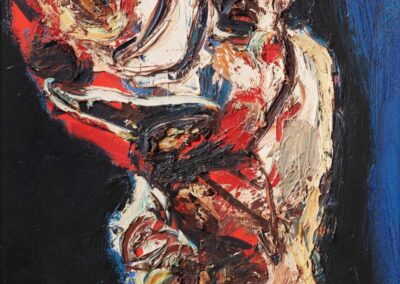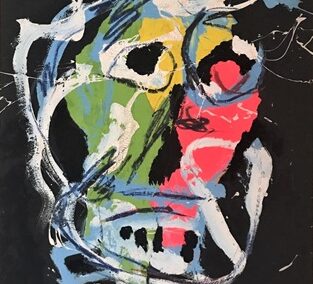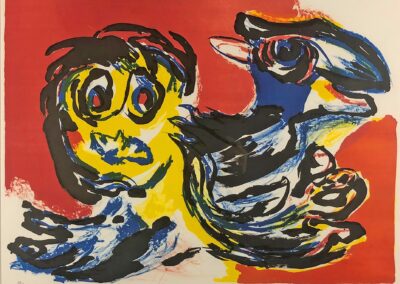Our next Artist You Need To Know is Karel Appel (1921 – 2006).
Christiaan Karel Appel was a Dutch artist who worked primarily in paint but also in sculpture and poetry. In 1948 he co founded the CoBra art movement, an important group focused upon the avant-garde. He was an “influential Dutch painter whose figurative abstractions employed expressive colors and forms. Like Jean Dubuffet, Appel found inspiration in the artwork of children and the rejection of sophisticated aesthetic tastes.” (from Tate Modern)
“Painting, like passion, is an emotion full of truth and rings a living sound, like the roar coming from the lion’s breast,” he reflected. “To paint is to destroy what preceded. I never try to make a painting, but a chunk of life.”
Appel was born in Amsterdam, Netherlands, and began painting at the age of 14 : he would study at the Rijksakademie van Beeldende Kunsten and in 1946 had his first solo exhibition. His rough and expressive style was informed by contemporary artists like Paul Klee and Joan Miró, as well as folk tales and the unmediated artworks and approaches of children (“If I paint like a barbarian, it’s because we live in a barbarous age,” Appel once commented).
The CoBrA Group (an acronym for the cities the participating artists inhabited, which were Copenhagen, Brussels, and Amsterdam) “were united in their rejection of rationalism and geometric abstraction” which was rife at the time in mid twentieth century painting in the Europe and North America. The artists in CoBra went their separate aesthetic ways in 1952 and Appel then became part of Art Informel (this group included Michel Tapié and Henri Michaux).
His exhibition record is impressive and information about his many shows (both while alive and posthumously) can be seen here at the Karl Appel Foundation.
Appel’s works are presently held in the collections of The Museum of Modern Art (New York), the Art Institute of Chicago, the National Gallery of Art in Washington, D.C., the Rijksmuseum in Amsterdam, Museum de Fundatie (Zwolle, The Netherlands), Art Gallery of Hamilton, The Phillips Collection (Washington D.C., US), Musée National d’Art Moderne, Centre Georges Pompidou (Paris), San Francisco Museum of Modern Art, Stanford University Museum of Art (Stanford, CT), Tate Modern (London) and many others around the world.
“My brush-strokes start in nothing and they end in nothing, and in-between you find the image.”
Appel died in 2006 at his home in Zürich, Switzerland : a testament to his legacy and importance was that he was interred in the Père Lachaise Cemetery in Paris, France, among numerous historically significant figures in the spheres of culture and politics. Five years later, Google would mark what would have been his 90th birthday with a doodle celebrating his artwork.
Years before his death, Appel established the Karel Appel Foundation, whose purpose is “to preserve [Appel’s] artworks, to promote public awareness and knowledge of Karel Appel’s oeuvre, and to supervise publication of the Oeuvre Catalogue of the paintings, the works on paper, and the sculptures.” Much more about his life and work can be seen there.
“The duty of the artist is not to be calculating in any sense, so that he may be free himself of human emotions while carried by the universal forces of life. Only then does one not think about making art, or about styles, or directions. Something comes about, something happens.”


















